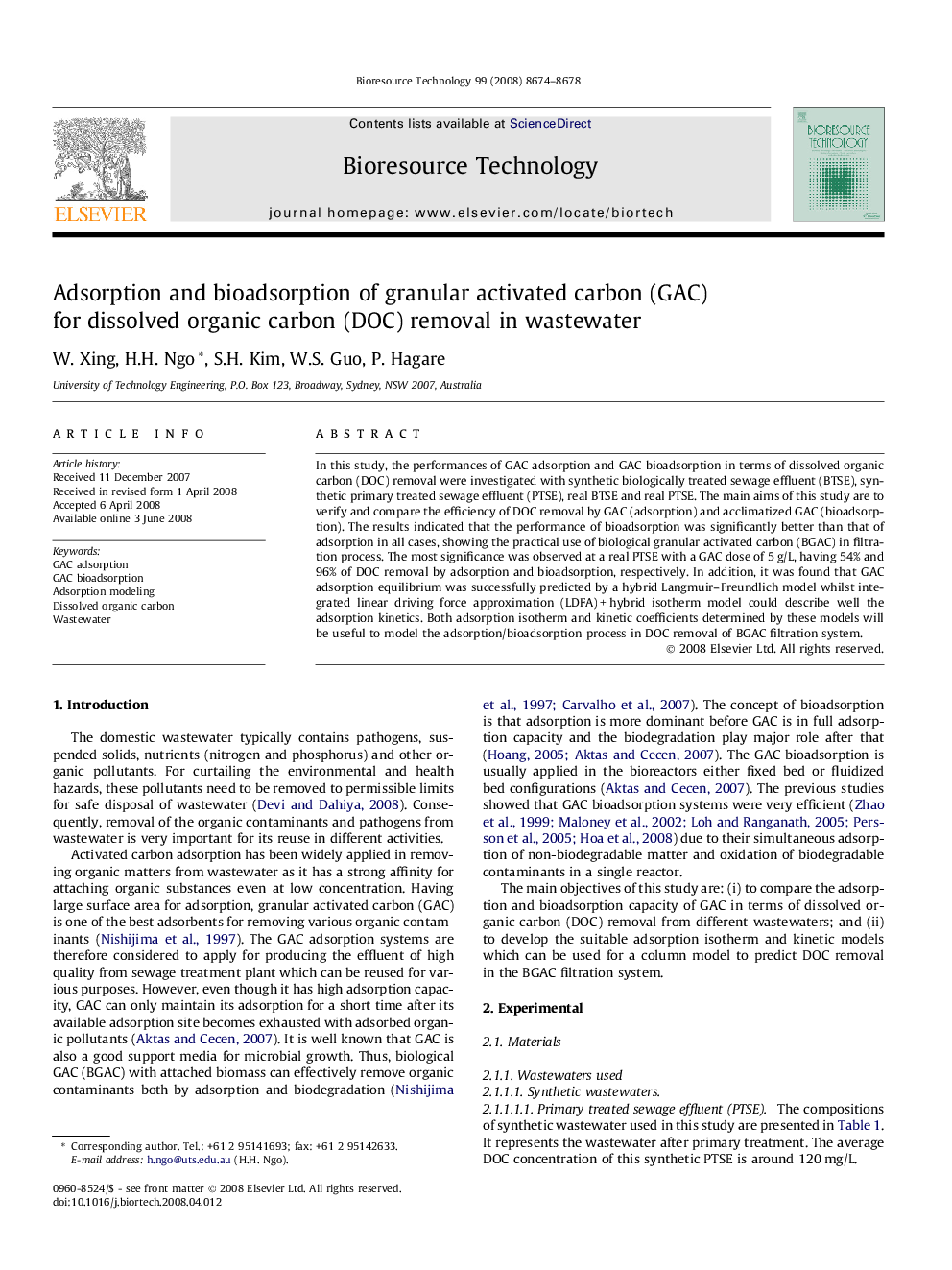| Article ID | Journal | Published Year | Pages | File Type |
|---|---|---|---|---|
| 684763 | Bioresource Technology | 2008 | 5 Pages |
In this study, the performances of GAC adsorption and GAC bioadsorption in terms of dissolved organic carbon (DOC) removal were investigated with synthetic biologically treated sewage effluent (BTSE), synthetic primary treated sewage effluent (PTSE), real BTSE and real PTSE. The main aims of this study are to verify and compare the efficiency of DOC removal by GAC (adsorption) and acclimatized GAC (bioadsorption). The results indicated that the performance of bioadsorption was significantly better than that of adsorption in all cases, showing the practical use of biological granular activated carbon (BGAC) in filtration process. The most significance was observed at a real PTSE with a GAC dose of 5 g/L, having 54% and 96% of DOC removal by adsorption and bioadsorption, respectively. In addition, it was found that GAC adsorption equilibrium was successfully predicted by a hybrid Langmuir–Freundlich model whilst integrated linear driving force approximation (LDFA) + hybrid isotherm model could describe well the adsorption kinetics. Both adsorption isotherm and kinetic coefficients determined by these models will be useful to model the adsorption/bioadsorption process in DOC removal of BGAC filtration system.
